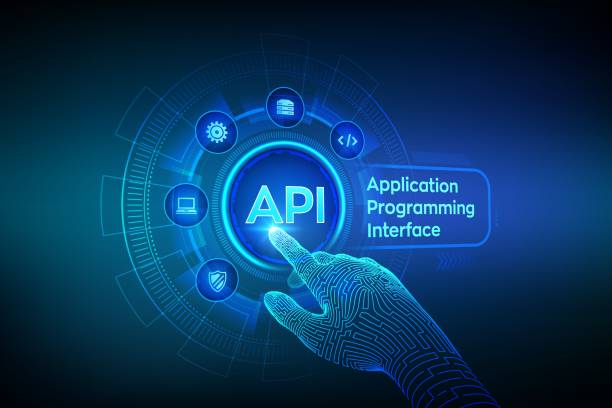API lifecycle management tools help organizations streamline this process, ensuring APIs are secure, scalable, and well-documented. This guide explores the best API lifecycle management tools, their key features, benefits, and best practices for implementation.
What Are API Lifecycle Management Tools?
API lifecycle management tools are platforms that help organizations manage APIs at every stage of their existence, including:
- Design & Development – Creating, testing, and documenting APIs.
- Deployment & Versioning – Publishing, updating, and maintaining API versions.
- Security & Governance – Enforcing security policies, access control, and compliance.
- Monitoring & Analytics – Tracking API performance, usage, and errors.
- Deprecation & Retirement – Managing API sunsetting and migration.
These tools ensure APIs remain efficient, secure, and aligned with business goals.
Top API Lifecycle Management Tools
1. Postman
✅ Best for: API design, testing, and collaboration
🔹 Key Features:
- API documentation & mock servers
- Automated testing & CI/CD integration
- Team collaboration & version control
- API monitoring & performance analytics
2. Swagger (OpenAPI) / SwaggerHub
✅ Best for: API design-first development & documentation
🔹 Key Features:
- OpenAPI specification support
- Interactive API documentation
- Mock API generation
- Team collaboration & versioning
3. Apigee (Google Cloud)
✅ Best for: Enterprise API management & monetization
🔹 Key Features:
- API gateway & traffic management
- Developer portal & analytics
- Security policies & threat protection
- Monetization & rate limiting
4. Kong Gateway
✅ Best for: Microservices & cloud-native API management
🔹 Key Features:
- Lightweight & scalable API gateway
- Plugin-based security (OAuth, JWT, rate limiting)
- Service mesh integration (Kuma)
- Real-time monitoring & logging
5. MuleSoft Anypoint Platform
✅ Best for: Full API lifecycle & integration management
🔹 Key Features:
- API-led connectivity
- Low-code integration
- Policy enforcement & governance
- Centralized API monitoring
6. AWS API Gateway
✅ Best for: Serverless & cloud-based APIs
🔹 Key Features:
- REST & WebSocket API support
- Auto-scaling & load balancing
- AWS Lambda & IAM integration
- Usage analytics & logging
7. Azure API Management
✅ Best for: Microsoft ecosystem APIs
🔹 Key Features:
- API versioning & revisions
- Built-in caching & throttling
- Developer portal & analytics
- AI-based threat detection
8. Stoplight
✅ Best for: API design & governance
🔹 Key Features:
- Visual API design (OpenAPI, JSON Schema)
- Automated style guides & linting
- Mock servers & testing
- Git & CI/CD integration
9. Tyk
✅ Best for: Open-source API management
🔹 Key Features:
- Lightweight API gateway
- GraphQL & REST support
- Developer portal & analytics
- Plugin-based security
10. IBM API Connect
✅ Best for: Enterprise-grade API security & governance
🔹 Key Features:
- AI-powered API analytics
- Automated policy enforcement
- Developer portal & self-service APIs
- Multi-cloud & hybrid deployment
Key Benefits of API Lifecycle Management Tools
- Improved Developer Productivity – Streamlines API design, testing, and documentation.
- Enhanced Security – Enforces authentication, rate limiting, and threat protection.
- Better Governance – Ensures compliance with API standards and policies.
- Scalability & Performance – Optimizes API traffic and reduces latency.
- Cost Efficiency – Reduces manual efforts in API maintenance.
- Business Insights – Provides analytics on API usage and performance.
Best API Management Tools: Features & Pricing
| Tool | Best For | Key Features | Pricing |
|---|---|---|---|
| Postman | API design, testing, and collaboration | API documentation & mock servers, automated testing & CI/CD integration, team collaboration & version control, API monitoring & performance analytics | Free & Paid plans |
| SwaggerHub | API design-first development & documentation | OpenAPI specification support, interactive API documentation, mock API generation, team collaboration & versioning | Free & Paid plans |
| Apigee (Google Cloud) | Enterprise API management & monetization | API gateway & traffic management, developer portal & analytics, security policies & threat protection, monetization & rate limiting | Enterprise pricing |
| Kong Gateway | Microservices & cloud-native API management | Lightweight & scalable API gateway, plugin-based security (OAuth, JWT, rate limiting), service mesh integration (Kuma), real-time monitoring & logging | Open Source & Paid |
| MuleSoft Anypoint Platform | Full API lifecycle & integration management | API-led connectivity, low-code integration, policy enforcement & governance, centralized API monitoring | Enterprise pricing |
| AWS API Gateway | Serverless & cloud-based APIs | REST & WebSocket API support, auto-scaling & load balancing, AWS Lambda & IAM integration, usage analytics & logging | Pay-as-you-go |
| Azure API Management | Microsoft ecosystem APIs | API versioning & revisions, built-in caching & throttling, developer portal & analytics, AI-based threat detection | Subscription-based |
| Stoplight | API design & governance | Visual API design (OpenAPI, JSON Schema), automated style guides & linting, mock servers & testing, Git & CI/CD integration | Free & Paid plans |
| Tyk | Open-source API management | Lightweight API gateway, GraphQL & REST support, developer portal & analytics, plugin-based security | Open Source & Paid |
| IBM API Connect | Enterprise-grade API security & governance | AI-powered API analytics, automated policy enforcement, developer portal & self-service APIs, multi-cloud & hybrid deployment | Enterprise pricing |
Key Takeaways:
- 🛠️ Open-source options: Kong, Tyk
- ☁️ Cloud-native: AWS, Azure, Apigee
- 📝 Design-focused: SwaggerHub, Stoplight
- 🔒 Enterprise-grade: Apigee, MuleSoft, IBM
Best Practices for API Lifecycle Management
- Adopt an API-First Approach – Design APIs before development begins.
- Use Standard Specifications (OpenAPI, GraphQL) – Ensures consistency.
- Implement Strong Security Policies – OAuth, JWT, rate limiting, and encryption.
- Monitor & Optimize Performance – Track errors, latency, and usage patterns.
- Version APIs Properly – Avoid breaking changes with semantic versioning.
- Document APIs Thoroughly – Helps developers integrate APIs faster.
- Plan for Deprecation – Notify users before retiring APIs.
Future Trends in API Lifecycle Management
- AI-Powered API Governance – Automated policy enforcement & anomaly detection.
- Low-Code/No-Code API Development – Faster API creation for non-developers.
- GraphQL & Event-Driven APIs – More flexible data querying.
- Multi-Cloud & Hybrid API Management – Seamless deployment across clouds.
- API Monetization Strategies – Usage-based billing & API marketplaces.


qzTbcr SxCEz ORCH VmE drk
API lifecycle management tools are essential for ensuring that APIs are effectively managed from creation to retirement. These platforms provide a comprehensive approach to handling APIs, which is crucial for maintaining their performance and security. It’s interesting to see how these tools can streamline the entire process, making it easier for organizations to adapt to changing requirements. I wonder if there are any specific features that stand out as particularly useful in these tools? Also, how do these platforms handle the integration with existing systems and workflows? It would be great to hear more about real-world examples where these tools have made a significant impact. What are the biggest challenges organizations face when implementing API lifecycle management tools?
API lifecycle management tools indeed seem to play a crucial role in modern organizations, ensuring APIs are handled efficiently from start to finish. It’s fascinating how they streamline the entire process, making it easier to adapt to ever-changing requirements. I’m particularly curious about the standout features—are there any that truly set these tools apart? Additionally, integration with existing systems and workflows can often be tricky—how do these platforms manage that? Real-world examples would be incredibly insightful to understand their practical impact. Finally, what are the main challenges organizations encounter when implementing these tools? I’d love to hear more about the hurdles and how they can be overcome.
API lifecycle management tools are indeed crucial for organizations aiming to maintain efficient and secure APIs. It’s fascinating how these platforms can simplify the entire process, from creation to retirement. I’d love to know which specific features are considered most valuable by users. Additionally, how seamless is the integration with existing systems and workflows? Real-world examples would be incredibly insightful to understand the practical benefits. What are the main hurdles organizations encounter when adopting these tools? Do you think smaller companies face different challenges compared to larger enterprises? I’m also curious about the scalability of such platforms—how well do they handle growth and increasing complexity?